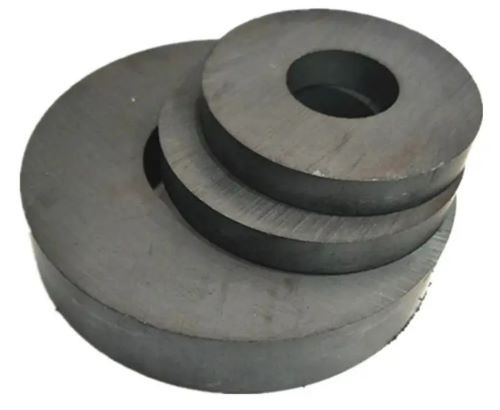History of Permanent Magnets
Among all the magnets that are studied and used, permanent magnets are of great importance and have evolved for years.
–Al-Ni-Co Magnets
AlNiCo magnets containing aluminum, nickel, and cobalt elements were discovered in the 1930s. Because of their strong magnetic power, great resistance to corrosion and high temperature of about 600°C, AlNiCo magnets took the place of electromagnets and found lots of applications including generators, motors, etc.
However, AlNiCo magnets are prone to demagnetization. So, they left the market gradually. New high-tech and lower-cost magnets appeared in the history of permanent magnets consequently.
–Ferrite Magnets
The first ferrite magnet came to the world in 1952. Ferrite is mainly composed of iron oxide and strontium carbonate. Ferrite magnets are also called ceramic magnets since they have impressive electrical insulation ability. They have a good temperature tolerance of up to 250°C, lower cost, and better coercivity. Ferrite magnets are highly resistant to deterioration and corrosion as well. Therefore, such magnets quickly replaced Al-Ni-Co magnets and are employed in a range of products like electronic sensing devices and magnetic separators.

Ferrite Magnets
–Sm-Co Magnets
The introduction of rare earth elements into permanent magnets started in the 1960s. The mid-1960s saw the discovery of Sm-Co magnets, which are made from samarium, cobalt, and iron. These magnets have many high-temperature applications because they can stand temperatures up to 300° C. Sm-Co magnets also stand out for their magnetic strength and corrosion resistance.
Yet, samarium cobalt magnets are very brittle and extremely fragile. The manufacturing cost is very expensive as well.
–Nd-Fe-B Magnets
In 1984, General Motors, Sumitomo Special Metals, and the Chinese Academy of Sciences made Nd-Fe-B magnets, which contain neodymium, iron, and boron. As the lightest, strongest, and most affordable type of rare earth magnets, Nd-Fe-B magnets are widely applied to electrical engineering, communication technology, etc.
Nevertheless, they have a lower Curie temperature of 320°C, and they are rather vulnerable to oxidation. These magnetic materials might crush into powder in a corrosive environment.